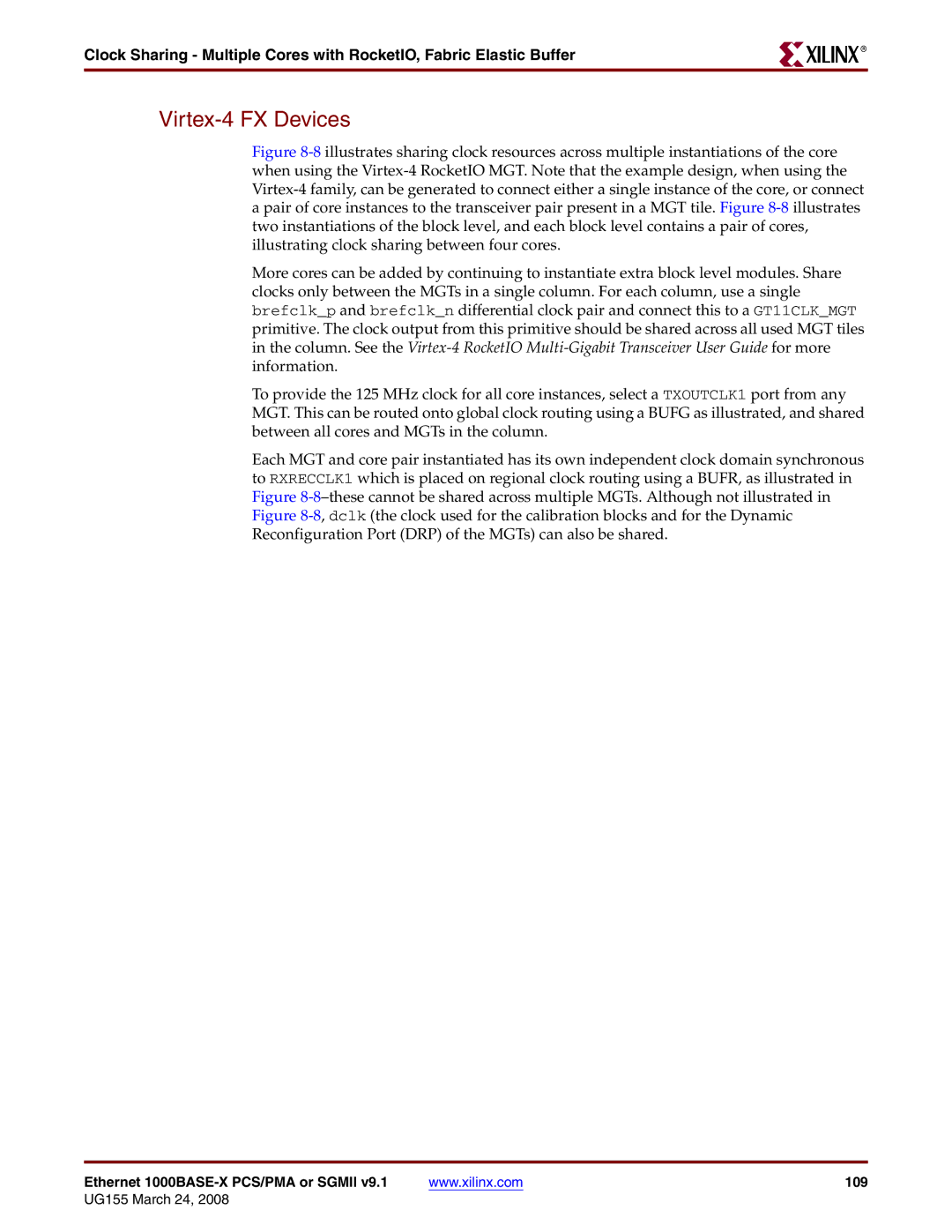
Clock Sharing - Multiple Cores with RocketIO, Fabric Elastic Buffer
R
Virtex-4 FX Devices
Figure 8-8 illustrates sharing clock resources across multiple instantiations of the core when using the Virtex-4 RocketIO MGT. Note that the example design, when using the Virtex-4 family, can be generated to connect either a single instance of the core, or connect a pair of core instances to the transceiver pair present in a MGT tile. Figure 8-8 illustrates two instantiations of the block level, and each block level contains a pair of cores, illustrating clock sharing between four cores.
More cores can be added by continuing to instantiate extra block level modules. Share clocks only between the MGTs in a single column. For each column, use a single brefclk_p and brefclk_n differential clock pair and connect this to a GT11CLK_MGT primitive. The clock output from this primitive should be shared across all used MGT tiles in the column. See the Virtex-4 RocketIO Multi-Gigabit Transceiver User Guide for more information.
To provide the 125 MHz clock for all core instances, select a TXOUTCLK1 port from any MGT. This can be routed onto global clock routing using a BUFG as illustrated, and shared between all cores and MGTs in the column.
Each MGT and core pair instantiated has its own independent clock domain synchronous to RXRECCLK1 which is placed on regional clock routing using a BUFR, as illustrated in Figure 8-8–these cannot be shared across multiple MGTs. Although not illustrated in Figure 8-8, dclk (the clock used for the calibration blocks and for the Dynamic Reconfiguration Port (DRP) of the MGTs) can also be shared.
Ethernet | www.xilinx.com | 109 |
